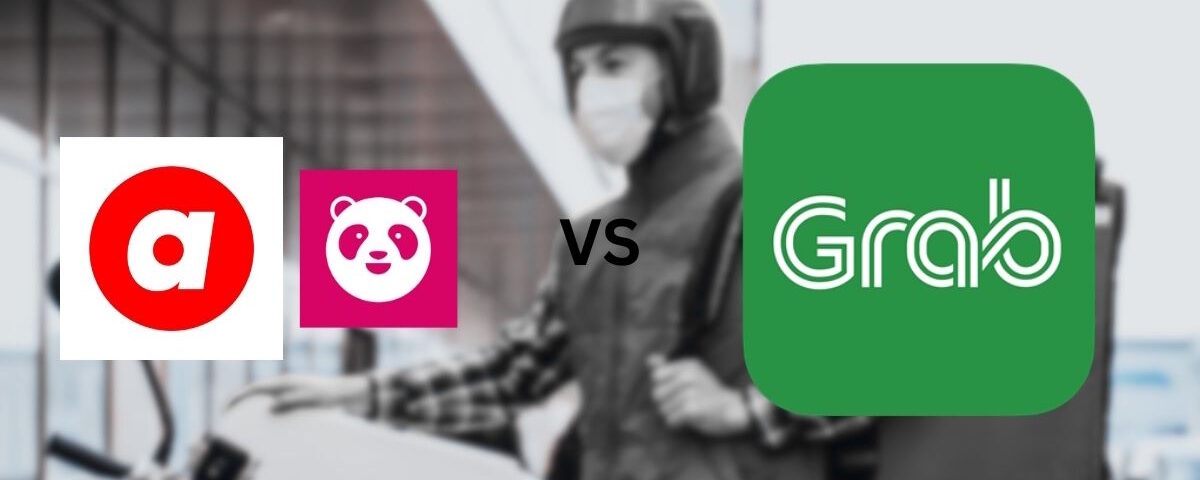In May 2023, AirAsia and Foodpanda announced a strategic partnership. The two companies are combining their strengths to provide Southeast Asian consumers with a more comprehensive range of services.
This team-up seems to align with Foodpanda’s future plans. The Singapore-based delivery platform has been expanding its reach beyond food delivery into “quick commerce” (q-commerce).
In 2019, Foodpanda introduced its online grocery service, Pandamart, and Foodpanda Shops, a marketplace for retail stores.
AirAsia also gets to strengthen its position in the region’s food-delivery market.
At the moment, NASDAQ-listed Grab is the leading player in the ASEAN ride-hailing and food delivery sectors.

How the partnership benefits AirAsia and Foodpanda
Under the terms of the partnership, AirAsia will integrate its ride-hailing service, AirAsia Ride, into the Foodpanda app.
This will give Foodpanda users access to a wider range of transportation options, while AirAsia Ride users can order food from Foodpanda’s extensive merchant network.
In addition, Foodpanda will boost AirAsia’s food delivery service, giving the low-cost airline a more competitive offering in the food delivery market.
AirAsia has already acquired northern Malaysia-based online delivery startup, Delivereat, for US$9.8 million in January 2022.

A threat to Grab?
AirAsia and Foodpanda are not the only platforms partnering up to intensify the competition with Grab.
Another notable rival of Grab in the ride-hailing industry is Gojek, an Indonesian platform.
In 2021, Gojek merged with e-commerce firm Tokopedia to form a new company called GoTo. This merger has given GoTo significant capital resources to invest in expanding its delivery services.
Despite the increasing competition, Grab still holds the top position in the ride-hailing and food delivery markets across Southeast Asia.
The platform operates in eight countries, including Singapore, Malaysia, Cambodia, Indonesia, Myanmar, the Philippines, Thailand, and Vietnam
Alongside its core services, Grab has expanded by offering grocery shopping, hotel bookings, and financial services.

The company made headlines when it went public on the Nasdaq platform in December 2021, with a valuation of US$40 billion.
However, despite its market dominance, Grab has yet to achieve profitability. In fact, it has experienced a staggering US$3.6 billion loss in 2021.
Has Grab changed the way it operates to protect its dominant position?
For the moment, it looks like Grab is more focused on turning its continuing financial losses into profitability.
According to Reuters, the ride-hailing and delivery giant with an estimated 8,800 staff implemented cost-cutting measures like freezing most hiring, putting a hold on salary raises for senior managers, and reducing travel and expense budgets. Grab has also reportedly been closing certain business units in 2022 and reducing incentive spending, as mentioned in the same article.
These efforts have shown progress, with the delivery segment of the business breaking even in the third quarter of 2022.

Grab Malaysia riders strike
However, Grab’s cost-saving measures might have made some of its riders unhappy. In August 2022, Grab Malaysia riders went on a 24-hour nationwide strike to protest against what they believed were unfair compensation rates.
The team of riders delivered a memorandum to Grab Malaysia, calling for the company to:
- Review and raise the fare prices based on the distance from pickup to delivery
- Bring back the bonus system that allowed riders to earn more based on trips and targets

A Mashable article reported that Grab riders received a fixed payment for each delivery and could earn additional incentives depending on the time and distance involved.
Grab responded by apologizing for the incident and clearing up any confusion by stating that it did not decrease the base fares for their riders’ delivery services.
Regarding a specific incident where a food delivery rider noticed an earnings discrepancy, the company attributed it to a system glitch.
They have since rectified the problem by compensating all delivery partners for the shortfall. Grab made an official announcement to the riders in late July 2022 to address the issue.

Grab’s competitors have experienced controversy as well.
In January 2023, the Philippines’s National Labor and Relations Commission (NLRC) 8th Division upheld the Labor Arbiter’s ruling, stating that Foodpanda Philippines Inc. was responsible for unlawfully terminating seven delivery riders.
According to BusinessWorld, in 2021, Foodpanda explained that it had to let go of a few riders who breached their agreement with the company. These riders had allegedly called for disruptions that could negatively impact the entire ecosystem, including other riders, vendors, and customers.

And the winners of this ride-hailing and delivery competition are… riders, drivers, and consumers
The AirAsia and Foodpanda partnership brings increased competition to Grab, and this is great news for consumers. Here’s why:
- Better pay and incentive rates for riders? Let’s hope these ride-hailing and delivery platforms can strike a balance between profitability and offering fair pay to their drivers and riders. The company that does this best will attract a sizable and content workforce.
- Lower prices for consumers? With more companies vying for customers, they’ll likely offer lower prices to attract business. This means consumers can save money on transportation and food delivery expenses.
- Improved service? To stay ahead of the competition, companies will strive to enhance their services. Expect faster deliveries, reliable drivers, and a wider range of food options, providing consumers with a better overall experience.
Stay tuned for further updates as AirAsia and Foodpanda release more details about their partnership.
What do you think of AirAsia and Foodpanda’s partnership? Will it be a threat to Grab’s position as the top food delivery and ride-hailing service in Southeast Asia? Share your opinions in the Comment section below!
